Irises are quite unpretentious plants, they are usually planted on public clubs near the entrance, as well as in the country areas. These undemanding plants have one essential advantage - they are not afraid of winter cold weather and bloom for 2 months. About how the landing of the irises and the care of them will be taught further.
Read more about Irisakh
Iris (which means "rainbow") - a genus of perennials belonging to the family Kasatikovyh or iris. To date, There are about 700 species of flowers of various shapes and shades. It is believed that the plant was named in honor of Iris Hippocrates, the famous goddess of the rainbow. This culture is grown for more than 2 thousand years. And they serve not only as decoration but also as a valuable raw material for the production of essential oils in the perfume industry.
It is said that the name "iris" - the collective. Beneath it hides as a root, and bulbs. The first type of flowers are filamentous or threadlike roots. Flower stalks are annuals. They are collected in the form of a fan-shaped beams at the base of the flower, the leaves on the stem virtually none. Flowers irises in solitary, but quite large and beautiful. At the same time they have an intricate and elegant shape. With regard to their color, it can be very different. The flower of six petals. Flowering usually begins in May and lasts until July. One plant can grow simultaneously two or three flowers from 1 to 6 days. The fruit of the plant is trehgnezdovuyu box. Planting bulbs irises has some differences from the landing root plants. This will tell on.
Types and varieties
bearded irises
The shape of the root plant species divided into the bearded and neborodatye. The first received its name due to the fact that their petals are small shaggy hairs. They, in turn, classified into standard, high, fillets, medium, melkotsvetkovye, fine, binders sredneroslye, dining and more. The flowers of these plants are of different color.
Bearded Irises: photo
Blue color
Yellow
Purple
pink
German Iris
Under this name hides several hundred kinds of high bearded iris. It is the most common type of plant. To name a few of its varieties:
- Bewilderbes - corrugated irises, with red or burgundy hue with a splash of yellow and white.
- Baltic Sea -gofrirovannye flowers with a bright blue color and blue beard.
- Acoma - these irises are ivory or blue tint. In this case, at present the flowers lavender border.
Neborodatye irises
This group of plants, which includes:
- iris sibirica,
- iris japonica,
- iris Spurius,
- iris California,
- iris Louisiana,
- iris marsh.
One of the most popular is Iris Siberian. This view can have a different color from blue to dark purple. Today there are about 1 thousand of these colors. The lack of any Siberian Iris is that it has no fragrance.
Another fairly popular representative of this type of colors is Iris Japanese. It is characterized by quite large large colors up to 280 mm in diameter. At the same time, they also do not smell. Selectioners from Japan managed to bring a multi-treatment and terry garden form of the Japanese Iris, which Khan-Shoba called.
Iris Bolotnaya is somewhat different with its characteristics. It is sometimes also called falseer. This type of plant can normally grow only in wet soil. In nature, it blooms with yellow flowers. It is often used as decoration of artificial reservoirs.
The varieties of irises in color are distributed to the following types:
- Monochrome.
- Two (having 2 tones of one color).
- Two-color.
- Variagates (the lower part of the flowers has red).
- AMAN (the top share of flowers is painted in gentle white color).
- Bordered.
- Overflow.
How to grow irises
Many people do not want to breed these colors for one simple reason - they believe that it is very difficult. Although, in fact, the cultivation of irises is easier than it may seem at first glance. Only you should know some subtleties that allow you to properly care for these colors:
- So, the rhizomes of plants grow horizontally and often their parts are shown on the surface. Therefore, so that these flowers are not extincting in winter, it is necessary to sprinkle them well and earth. After winter, this coating must be carefully removed.
- Another important point is that the irises are able to move and in just a year they can shift in one or another side by 5-8 cm. Therefore, to align the rows to plant these flowers are needed by fan of leaves along.
- It is impossible to feed irises with organic fertilizers. It is best for this purpose to use liquid mineral mixtures.
- Bearded plants grade should be planted on sand. To do this, the bottom of the hole is embanked by sand with a slide and then the root of the iris is distributed over it. If you put it too deep, then it will disappear or will not grow.
- The bulbous types of plants are planted in warm and loose soil. The flowering of such irises passes from May to June.
Planting Irisov
It is believed that first should wait for the flowering of irises, and then replant them. True, it's not always right. Basically, the climate affects the landing. Irises can be planted at any time of the year, except for winter. The main thing is that it was after their flowering. Good practice is considered to transplant the irises every 3-4 years. However, for some plant species, this is done less often. So, the Siberian varieties of colors are transplanted once every ten years. Otherwise, they will grow, stop blossoming or, in general, degenerate.
As a place for landing the irises of bearded, it is best to choose a sloping or elevation protected from drafts. It is desirable to do this in the first half of the day. It is very important that a good drainage and outflow of melt waters attended the selected place.
Irises Siberian and marsh prefer humid soil. Any varieties of these colors love rich soil. Therefore, if necessary, it follows in the spring before boarding it. Compost is suitable for this. You can also add fatty garden land. But the manure is not suitable for this purpose.
Some recommendations:
- If the soil is at an acidic area, then the chalk, dolomite flour or wood ash should be added to it.
- If the soil is sublinous, then it is recommended to add sand and peat.
- If in the ground plot a lot of sand, then add clay soil.
- In order to disinfect the soil before planting, a piece of fungicide should be poured and treated with herbicides from possible weeds.
Spring landing
If the planting material was purchased in the store or stored in winter, then before planting, it should be treated with growth stimulants. If you have fallen places, they should be removed, and the root after that hold in a mortgage solution for disinfection of 18-25 minutes. If there are long roots, then they are best trimmed. Irises are imprisoned as follows:
- A shallow well is done.
- Then he poured into her with a hormster.
- From above stacked in the horizontal position of the rhizomes of bearded iris.
- Roots are spread.
- The well falls asleep so that the upper part of the rhizomes remains on top.
- Good watered.
If you bury all the rhizomes, it can provoke posture. The varieties of beilding irises, on the contrary, should be plugged into several centimeters. In addition, to preserve moisture, they additionally should be closed with peat or cheese. There should be a distance of at least 0.5 m between iris.
Landing in autumn
Both in spring and autumn, irises are planted after flowering. As a rule, they do it in late August or September. It is advisable to land them earlier, because This increases the likelihood that they normally come true.
Output of landing:
- Iris's bush is knocked out, cleaned with a blade.
- Then the cord-shaped roots are neatly shortened.
- If there are fallen or damaged places, they should be cut, and then disinfected in the payroll solution. Couples for this will be enough. The solution should be dark pink.
- After that, the plants for 4-5 hours should be dried in the sun.
- Then the irises can be planted in your way. The minimum permissible distance between plants depends on their growth. So, it is 55 cm for high, for the average - 25 cm, and for low-speed - 15-18 cm.
Care for irises
General rules
All irises love heat and light. Watering is no less important, but you should know that in different periods of growth, the plant requires a different amount of moisture. Watering is especially important during the formation of buds. In this time, it is carried out regularly. Watering time is easy to select by the state of soil near the roots. When it becomes dry, then the plant should be watered.
You should say a little about the fertilizer of colors. Most often it is enough to make the planting of plants in the spring during the preparation of the site. As a fertilizer during growth, it is best to use phosphorus-potash compositions. During flowering, irises cannot be fed.
It is possible that during the growth of plants will overcome weeds. Therefore, periodic canopy is required. Due to horizontally developing roots located near the surface, it is necessary to do only manually. Sometimes it should be very careful to loosen the soil. The main thing about it is not damaged roots. If some flowers faded, they need to be removed as soon as possible so that various pests do not have time in them.
Diseases and pests
By the way, about pests. According to observations, there are more chances of being affected by pests and diseases are available in mothers and elegant varieties of irises. The most important thing to preserve the health of colors is the observance of all landing and care rules. In addition, you need to follow how irises feel during the entire growth period. This will allow you to see the problem in a timely manner and, accordingly, to take the necessary measures in time.
If the plant is affected by some kind of rot, then you should remove it as soon as possible and destroy. The remaining irises after that it is necessary to climb the root with a 2% solution of Fundazola. This drug is also suitable as a means of processing rhizomes before landing them. This will reduce the risk of developing the disease. In order to prevent the appearance of spots on flowers and leaves, a spraying of a 1% burgue mixture solution is applied.
Irises are most often affected by pests as scoops. They literally eaten the base of flowers, which is why the flowers are yellow and inevitably die. In order to prevent damage to these pests, at the beginning of the growth period, it should twice the irises of a 10% carbofos solution. There must be at least one week between spraying.
Irises can still affect the gladiolus trips, whose activities lead to a violation of photosynthesis. As a result, the plant becomes brown and gradually dry out. If the trips struck buds, they become calams, colorless and unsightly. Most of all there is probability to be affected by this pest during a dry summer. The problem can be solved as well as the carbofos solution. In addition, for the same purpose, it is possible to use 10% effect to the infusion of Machorka, which adds a grated economic soap.
Among the possible pests of irises are slippers. In order to get rid of them, the wet rags should be decomposed between the bushes. You can use the leaf leaves for the same purpose. Slugs will use them as shelter. Therefore, pests can easily collect and destroy along with a sheet. With slugs can be struggling differently. To do this, in dry weather, the pellets of metaldehyde are scattered in the area in the area. At the same time, 10 square meters. m. Approximately 35-40 gr.
Care after flowering
If Irises are planned to be searched, it is best to do after flowering. For this, color pains are cut. In addition, it is necessary to remove all available yellow leaves. You can only crop it. In this case, the tip of the sheet is made semicircular. Despite some disadvantages, Irises after flowering, everyone will also decorate your flowering. Rhizomes at this time will accumulate nutrients necessary for flowering and growth in the next year. If the autumn is warm enough, then the irises can bloom twice per year. When the leaves are covered, then approximately at a height of 10-15 cm need to trim and then burn. This is done in order to destroy the eggs of pests and causative agents of diseases that could develop in them.
Before the cold begin, the barbed roots of the plant should be thoroughly pouring the earth. The site needs to be closed with a layer of sand or peat. If strong and long frosty days are predicted, it is recommended to cover with dry leaves. If a lot of snow is expected in winter, then it is not necessary to cover the irises.
How to store irises
Color seedlings can be purchased or dug in autumn. For this, cut irises should be saved correctly. The best place for this will be cold and intractable room. People dried in advance are in the box, after which they are taken out on the loggia or on the balcony. Just in advance, each of them needs to be perfectly wrapped in fabric either paper. You can also sprinkle with dry sawdresses or peat.
It all concerns bearded irises. Other types of plants love moisture. Therefore, it is best to save their roots to spring by landing into a vase. In this case, long roots are pre-cut. In addition, they should be disinfected in the weak solution of potassium permanganate. After that, the roots are keenly dry. Then they need to be immersed in shallow in the ground, after which the earth is slightly slightly sprinkled. In the spring time, a sprouted root together with the Earth can be planted in a prepared ground. This is the main thing that you should know about the storage of irises. As you can see, the process of breeding these plants is not so complicated as it could seem at first glance.

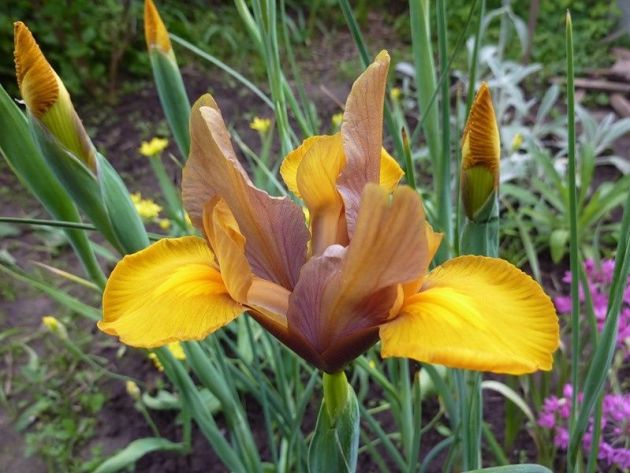
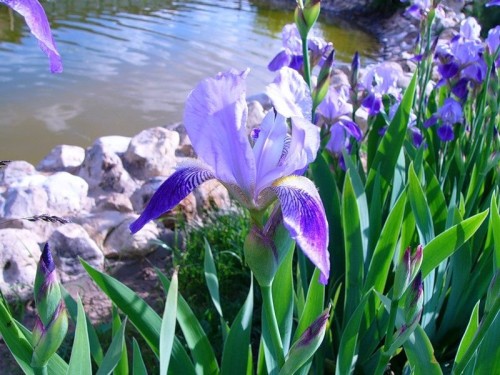
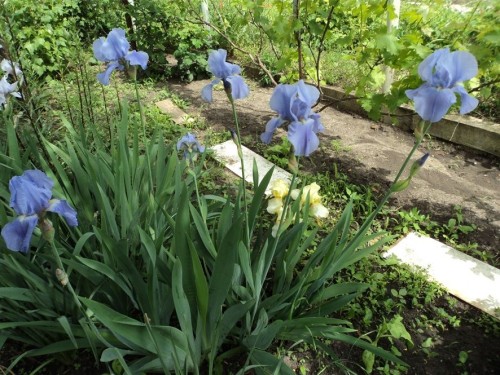
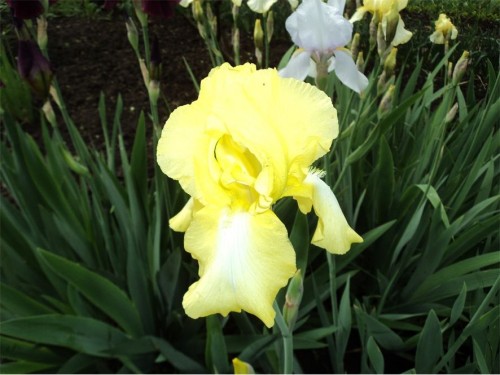
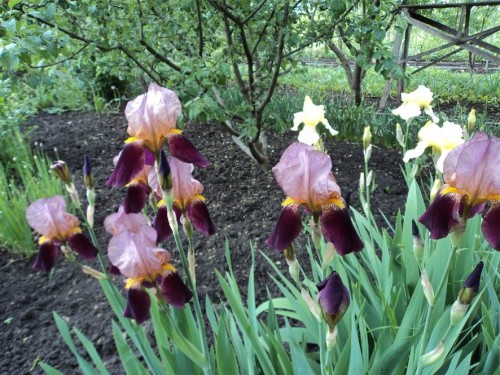
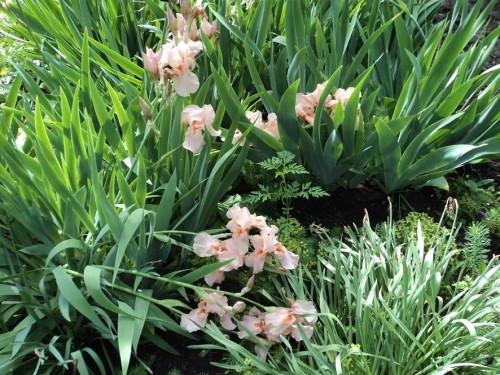
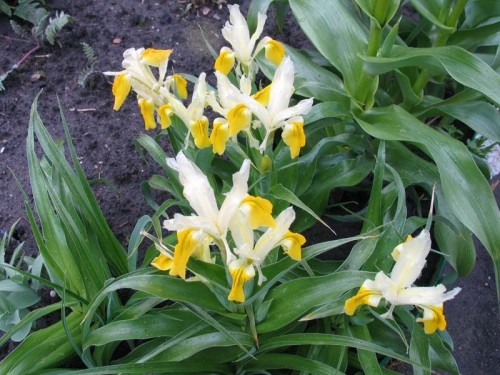

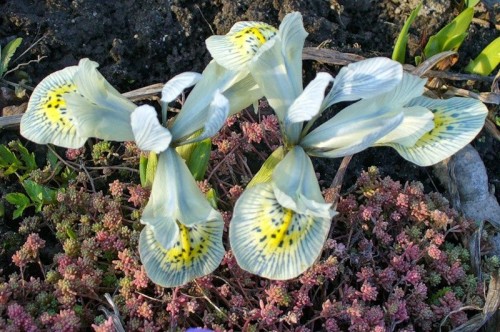
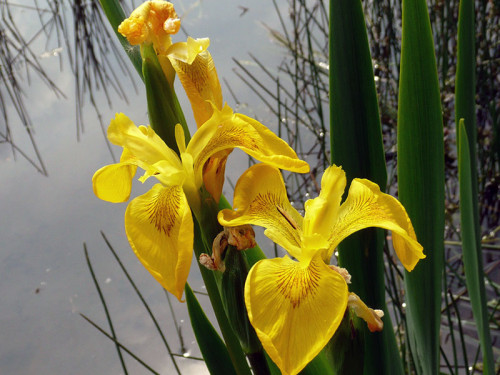
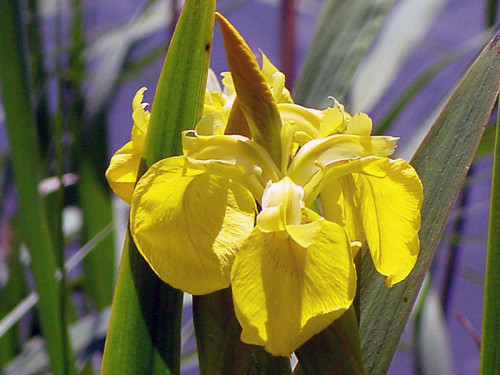
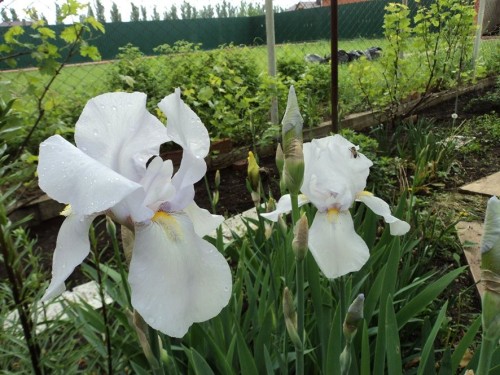
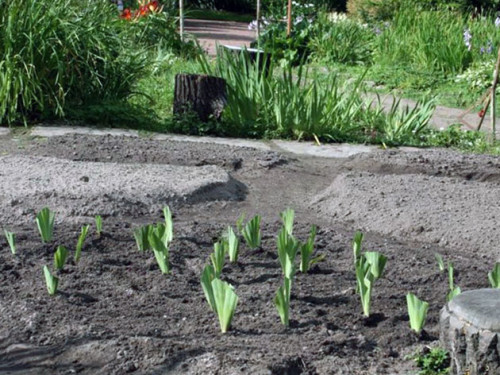

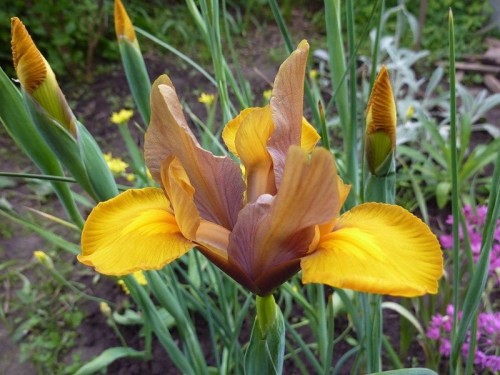
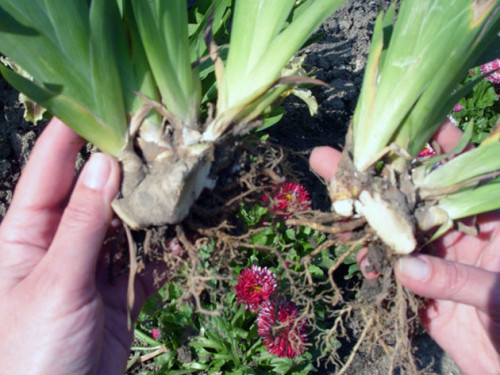
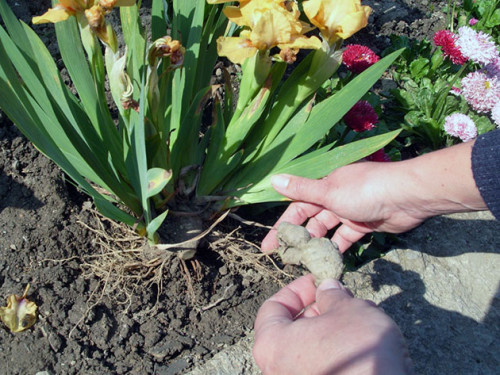
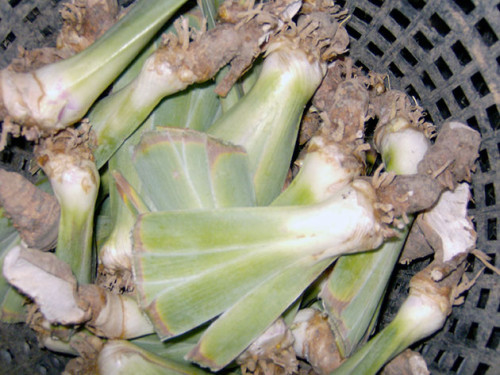





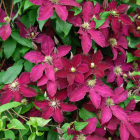
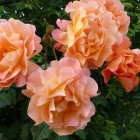

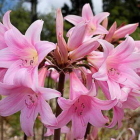
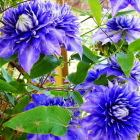
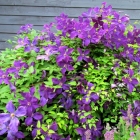
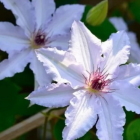
 Start a discussion ...
Start a discussion ...